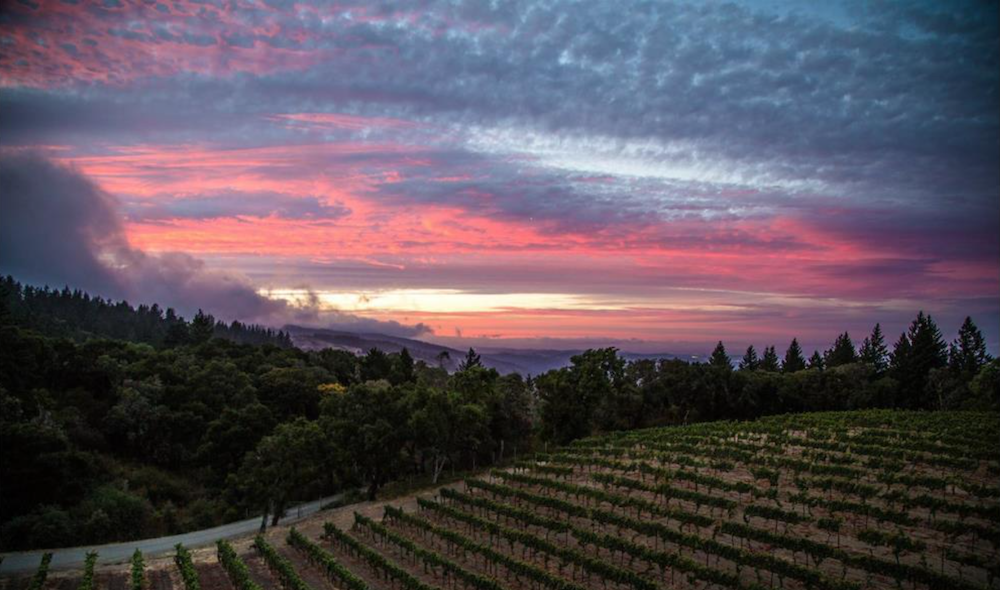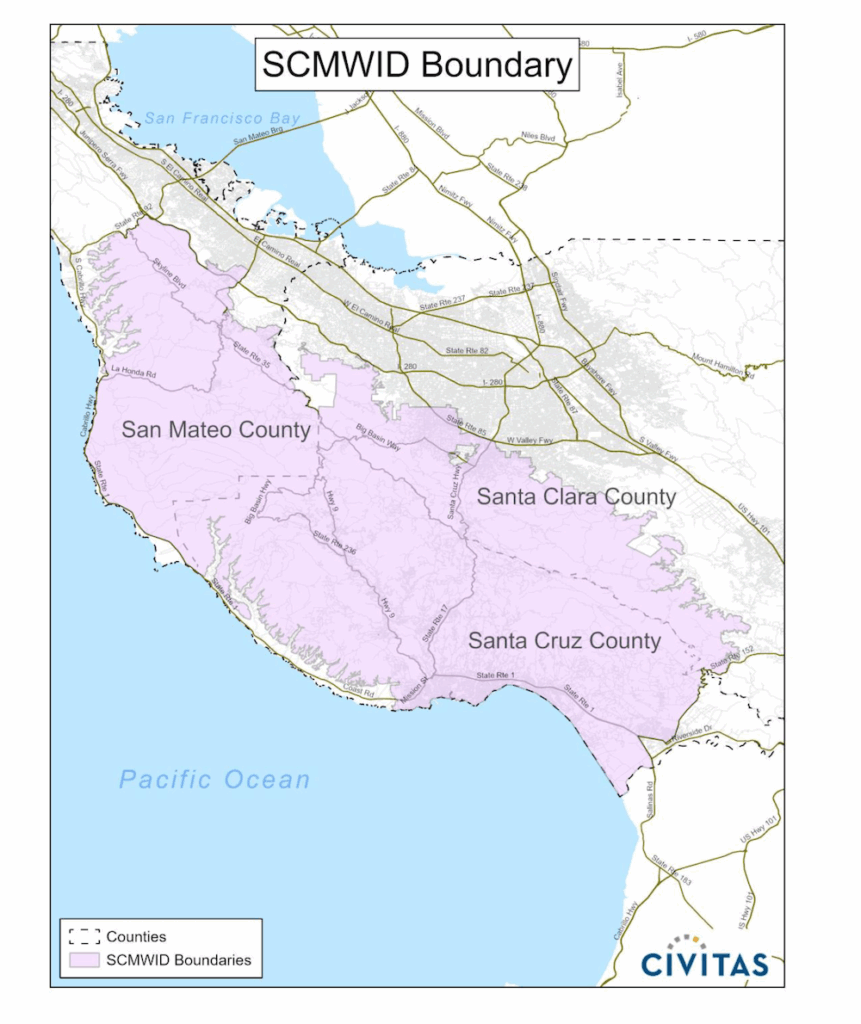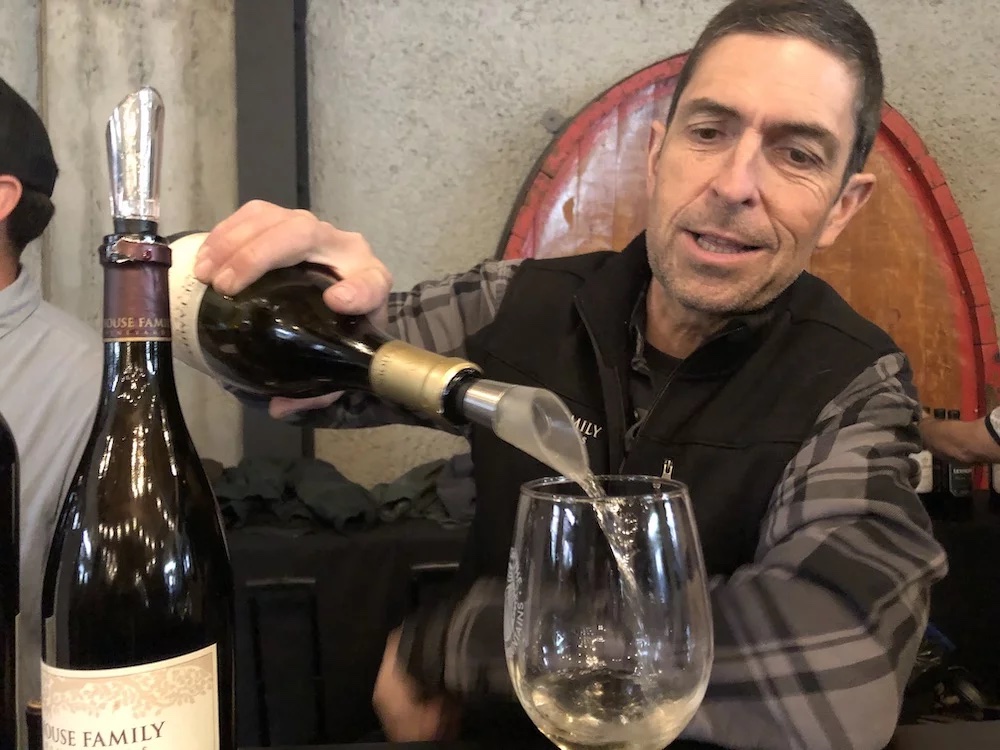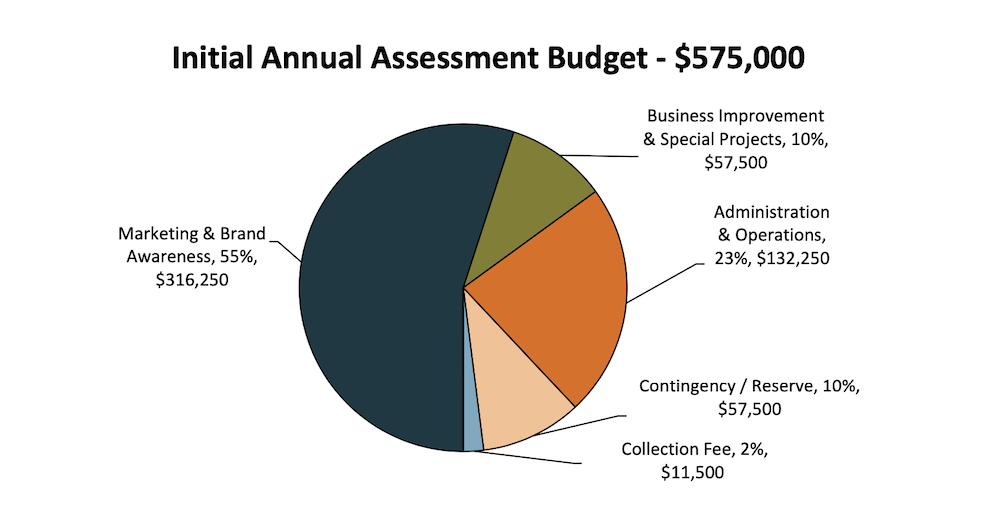
August 12, 2025 – A routine Santa Cruz County Board of Supervisors meeting August 5 included a small agenda item that might have big consequences for the future of the Wineries of the Santa Cruz Mountains AVA. The proposal to form a Wine Improvement District, covering the entirety of the defined AVA and all the operating wineries within it, passed unanimously.
Similar to a Business Improvement District, or BID, the proposed SCMWID establishes a vehicle for collecting monies from wineries in the area to help promote wine tourism, strengthen regional identity messaging and hopefully drive more business to that particular wine region.
Under this arrangement, a special 1% assessment fee will be added to each winery invoice, to raise funds for promotional activities, to be carried out by the SCMWA, on behalf of the wineries operating in the region. The fee applies only to wine sales transactions occurring within the state, including wine club shipments. The assessment does not apply to out of state transactions.
Recent discussions among winery owners in Sonoma County surrounding the issue of implementing what is essentially a special assessment district for the Sonoma AVA have made headlines in the wine press. While the Sonoma debate will rage on, there has been no such discussion at the public level among members of the Santa Cruz Mountains Winegrowers Association, or SCMWA.
SCMWA executive director Keiki MacKay tells us that back in 2023 the organization decided to pursue creating an inclusive Wine Improvement District that covers the entirety of the Santa Cruz Mountains AVA. This also covers wineries in San Mateo and Santa Clara counties, that fall within the AVA boundary lines. They officially launched the initiative in 2024.

“We sent letters to all the wineries with Type 02 licenses in the region in August of 2024,” says McKay. Two open houses were held to explain the process. She says they received “positive inclination” from over 75% of membership and from non-members as well.
The proposal was voted on and approved by the SCMWA Board in January of 2025, and they subsequently went to work to put it on the Santa Cruz County Board of Supervisors agenda, which just occurred.
There is much more work to do to get it on the agendas of all the other municipalities involved, including Los Gatos, Saratoga, Redwood City, Woodside and Watsonville. But McKay says they’ve been working behind the scenes for some time to lay the groundwork with all these municipalities.
SCMWA board president Jim Cargill told us, “This district will allow the wineries and vintners of the Santa Cruz Mountains AVA to level up and be a stronger voice for the world class wines that are being produced in the region. Winemaking and viticulture here go back almost 150 years. This is the next evolution in our branding.”
First, though, a public meeting will be held September 9 and a public hearing September 23 to review the proposed Santa Cruz Mountains Wine Improvement District (SCMWID) and the levy of assessments on wineries, along with request of consent from all jurisdictions to be included within the proposed SCMWID.

McKay says the SCMWID represents a win-win for the wineries. Small operations often find it hard to come up with membership dues, which can range from $740 to $3,000 annually, depending on the size of the operation. “Dues are an onus on the wineries,” states McKay.
This creates a fluctuating membership pool which ebbs and flows, creating instability when trying to plan for the next year’s events and outreach. Wineries tend to opt in and out of membership, based on the perceived business climate of the moment, and how they feel the current agenda of the association meets their needs.
Theoretically, the WID removes the membership barrier entirely, while creating a bigger pot of money to benefit the entire region. “The members and the Board are very excited about what this could do for marketing the AVA,” says McKay. “This represents a stable source of funding in this economy.”
Ironically, it might be the most successful membership drive ever for the SCMWA. If you’re sending money to the organization regardless of whether you voted for such a tax, you want to become more involved.
“We have had several non-members indicate their support including Testarossa, Sones and Pelican Ranch,” says McKay.
Los Gatos-based Testarossa is one of the largest wineries in the region. They have been an occasional member of SCMWA in the past. This might drive them to join again, according to proprietor Rob Jensen who told us, “After talking to folks in both Santa Barbara and Livermore, who both have investment districts and were very positive about it, we voted to support it. All of the wineries in the designated area, whether they voted for it or not, will be subject to the 1% assessment for marketing programs.”
Jensen points to the success Livermore has had in creating what they call The Livermore Heritage Wine District, which now has a 2% assessment fee. (Winery associations managing these districts can elect to up the collection fee from 1% after the first year.) According to one Livermore winery, revenues derived from the 2% tax paid by consumers were six times more than membership dues paid to the Livermore Valley Wine Community in the past, contributing significantly more funding for press outreach and visits, social media presence and other initiatives.
Santa Barbara County Vintners Association, after several years of discussion among their diverse membership over the implementation of such a plan, did finally pass what is known as the Santa Barbara Wine Preserve in February of 2025, and began levying the assessment in April.
The collection of the fees for both the Santa Barbara Wine Preserve and the SCMBID will be handled by a third party called HdL Companies, an agency that has been providing tax revenue collection services to government entities since 1983. HdL Companies gets paid a 2% collection fee on the total they harvest from the wineries that are part of the improvement districts.
For their part, Jim and Judy Schultze of Windy Oaks are optimistic. They’ve been involved with the SCMWA since they started their winery back in 1996.
“I think it’s fair to say we have mixed emotions about the WID,” says Jim. “I don’t really like any new tax, even if it is ultimately paid by our customers. The only real alternative is charging association members higher dues, and given the current climate in the wine industry, this is not a good option.” He feels that the Santa Cruz Mountains needs to do something to beef up their marketing efforts to keep competitive with other wine regions, and this may assist.

Part of the proposal outlines how the projected $575,000 in revenues will be spent by the SCMWA. It includes Admin & Ops Fees of $132, 250 (23%), Marketing and Brand Awareness of $316,250 (55%) and Business Improvement & Special Projects of $57,500 (13%). It is expected that the latter might include wine trail signage, or as McKay states, “other one-time projects that the wineries are interested in.”
McKay says they plan to start implementing the plan in the Summer of 2026, once the SCMWID is finalized and the first installment of funds comes in.
Two things are absolutely certain: HdL Companies will be making money off this arrangement, regardless of how the collected fees turned over to the winegrowers are ultimately used, and the wineries will have to add this assessment to all their invoices. (Wineries can check out the Santa Barbara County Vintner’s site for how to execute this depending on your POS platform: sbcountywines.com/santa-barbara-county-wine-preserve)
Hopefully, consumers will not mind being part of this effort to promote wine tourism, because they will ultimately pay, unwittingly or otherwise.
About the author
Laura Ness is a longtime wine journalist, columnist and judge who contributes regularly to Edible Monterey Bay, Spirited, WineOh.Tv, Los Gatos Magazine and Wine Industry Network, and a variety of consumer publications. Her passion is telling stories about the intriguing characters who inhabit the fascinating world of wine and food.
- Laura Nesshttps://www.ediblemontereybay.com/author/lness/
- Laura Nesshttps://www.ediblemontereybay.com/author/lness/
- Laura Nesshttps://www.ediblemontereybay.com/author/lness/
- Laura Nesshttps://www.ediblemontereybay.com/author/lness/


